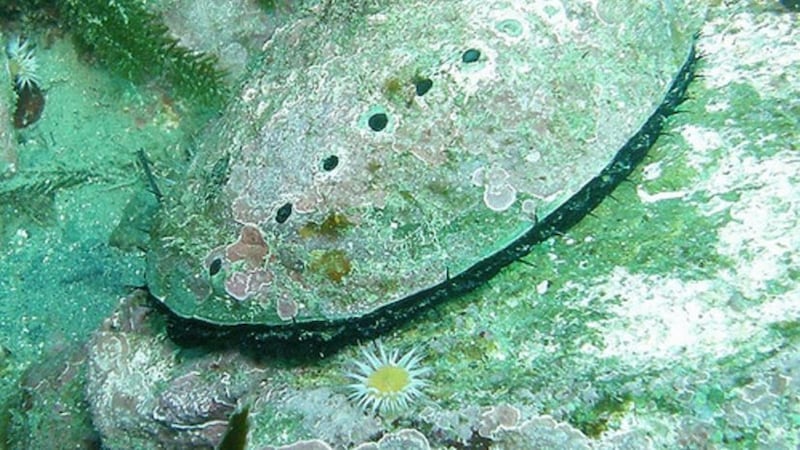Te Kāhui o Taranaki will hire four people to enforce a rāhui and monitor shellfish levels after it is lifted. Photo / supplied
Taranaki iwi are spending hundreds of thousands of dollars to enforce and monitor a two-year legal ban on collecting shellfish from the region's west coast.
Last December the government approved the ban from Paritutu to Ōpunakē, giving teeth to a customary rāhui laid down by hapū a year earlier.
The iwi entity that backed the hapū application for a legal ban, Te Kāhui o Taranaki, said the money was needed to prepare for when the ban ended.
Te Kāhui chairperson Jacqui King told a community meeting in Oāonui on Sunday that four new staff would be hired to monitor and assess kaimoana numbers and habitat.
The iwi would also fund a strategic advisory committee of hapū rāhui leaders to advocate and influence at national and regional level, and to keep agencies like the Ministry of Primary Industry, police, local councils and the Department of Conservation focused on the coast.
King said it was difficult to spend such a large sum from the Taranaki iwi's Treaty settlement.
"We are using our settlement resources which are supposed to rebuild our whānau and our communities as much as we possibly can with the small pūtea that we've received. We're going to have to use that to do all this mahi because [government agencies] aren't doing their job.
"There are so many other needs of whānau from housing, cost of living, all those issues have to be priorities."
One fulltime and three part-time takutai kaitiaki (coastal custodians) would work under Te Kāhui's pou taiao (environment manager) Ngawai Terry and alongside existing taiao officers.
King said she did not want to reveal the exact amount allocated to the kaimoana ban until all uri (hapū members) could be informed, but it was hundreds of thousands of dollars.
Tumuwhakarito (chief executive) Wharehoka Wano said Te Kāhui o Taranaki would continue to be led by hapū, despite being in charge of the new workers and dedicating time from existing staff.
Wano said the large investment was aligned with Te Kāhui's long-term goals.
"The two big priorities in our strategy are engagement with our people and environmental issues… [This is] a way to engage our people back to the takutai, we see it as an engagement opportunity."
Parihaka kaumātua Mahara Okeroa said the volunteers who had faced "enormous stress" trying to enforce the rāhui would step back from their patrols.
"The issue of compliance is no longer ours, it belongs to the people who are responsible for the compliance."
Okeroa said police were helping and fisheries officers were now "more on the ball" so volunteers would mostly call 0800 4 POACHER to report breaches of the kaimoana collection ban.
Okeroa said the iwi investment would help shape a two-year transition to more permanent protection when the ban was lifted.
Coastal assessments would provide evidence for likely applications to set up mahinga mātaitai. Mātaitai reserves allow traditional fishing under locally determined rules, with commercial fishing usually banned.
King said habitat research would be informed by mātauranga - local knowledge based on centuries of use of the coast.
Scientists have also offered help including independent marine biologist Nicole Sturgess, two Taranaki Regional Council scientists in a personal capacity, along with Murray Crombie, a former DOC area manager with marine reserve experience.
King said some whānau were worried customary kaimoana practices could be lost if a ban was extended, as children typically learn alongside their parents.
"There's often a window, a coming-of-age, where our whānau go out and that's the time when they learn.
"It might be that instead they become our researchers on our reefs…that they're the ones doing the data collection."
Another concern was the prospect of kina taking over reefs, creating 'kina barrens' devoid of other sea life.
The former Oceans and Fisheries Minister David Parker did not decide whether to ban taking crayfish - which is prohibited under the rāhui - likely because of a recent High Court order to review his "unlawful" crayfish catch limits in Northland.
Kōura (crayfish) are a major predator of kina, and if they are taken the kina have more chance to take over.
King said the iwi would continue to push the new minister Stuart Nash to ban collection of kōura.
The legal ban was requested last May by hapū, backed by Te Kāhui o Taranaki, who were alarmed at hundreds of visitors collecting kaimoana - especially pāua - during recent summers.
Some gatherers had continued to flout the rāhui although numbers were lower than during the summer peaks of the previous two years.
The ban under section 186A of the Fisheries Act covers all species of shellfish, anemones, conger eels and seaweed (except beach cast).
It extends two nautical miles offshore with fines of up to $5000, or up to $100,000 if kaimoana is taken for sale.
All but one hapū of neighbouring Ngāruahine have also requested a s186A legal ban over another 30 kilometres of coastline as far as Hāwera, and lodged their application four months after the Taranaki iwi bid.
-RNZ

